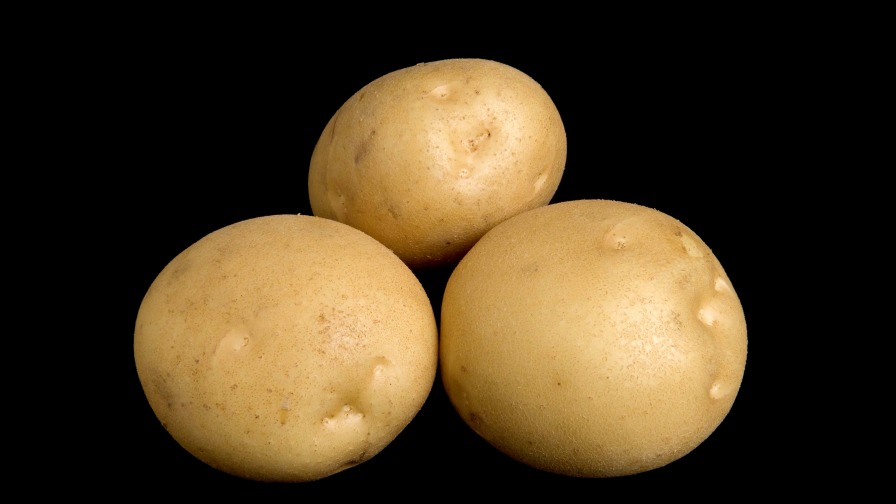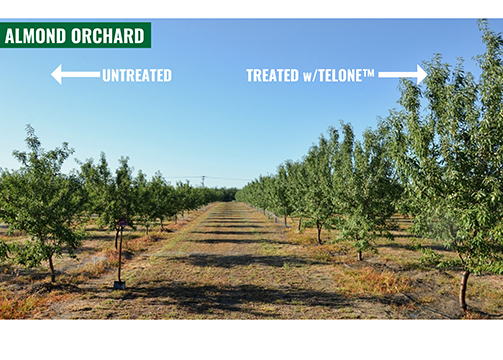Potato Breeding Update From Cornell University

Walter De Jong, Cornell University
Walter De Jong, Associate Professor at Cornell University’s School of Integrative Plant Sciences, Plant Breeding and Genetics Section, has been researching potatoes at Cornell for more than 15 years. Potatoes have been bred at Cornell for at least 50 years, De Jong says, and 70% of the university’s breeding efforts are focused on developing new chip varieties, while 30% is dedicated to various fresh market classes.
The program primarily breeds varieties suitable for the Northeast, or within a 500-mile radius of the breeding facility in Ithaca, NY.
Breeding efforts differ for fresh and processed markets. For the fresh market, areas of interest include developing varieties that look attractive, taste good, and yield well enough that growers will want to grow them, according to De Jong.
“For chipping varieties, we’re trying to develop round, white varieties that have relatively high starch content that don’t accumulate much sugar during cold storage,” he says.
Pathogen Resistance Push
Cornell’s breeding program has been incorporating pathogen resistance into as many varieties as it can, and one of the more recent areas of focus has been breeding resistance to Potato Virus Y (PVY), De Jong says.
“We want to incorporate PVY into as many potatoes as we can for both chipping and fresh markets,” De Jong says. “There are new strains of PVY that can cause tuber necrosis. Reducing yield is one thing, but making tubers unmarketable is another. There are several resistance genes that have been brought in from wild, cultivated species from South America that other breeders are trying to incorporate.”
Another major area of concern is breeding resistance for a new race of golden nematode, Ro2, which has been found in Long Island and upstate New York.
The original race of golden nema-tode, Ro1, is a quarantined pest in New York, and nearly every variety that Cornell has produced within the last 30 years has incorporated resistance to the pest, De Jong explains. However, the new race, Ro2, has not responded to conventional resistance, so researchers at Cornell have been striving to incorporate resistance to the new race since 2000.
Consumer Friendly Traits
Perhaps even more important than disease resistance, De Jong says, is the research being done to improve the outward appearance of potato varieties.
“For fresh market, there is much more emphasis on how smooth the skin is. In some ways, that seems appalling, but the reality is most people buy with their eyes, so the varieties have to look good,” he says.
“While we’re doing that, we’re trying to pack a bunch of other stuff in there — disease resistance, high yields, good storability, and good eating quality. But we’re really trying to push external appearance.”
As far as what varieties he’s working with, De Jong says the primary focus is on round, white skin/white flesh varieties because of their popularity with the American consumer. However, a wide range of traits is being explored.
“We also try to develop red skin/white flesh potatoes, yellow-fleshed potatoes, potatoes that are completely purple throughout, completely red throughout, potatoes that have unusual shapes or color patterns, or where some of the skin is one color and other parts are (another),” he says.
Strengths Of Chipping Varieties

Two chipping varieties Cornell released in the last few years that have shown promise are ‘Lamoka’ and ‘Waneta.’ “They both have outstanding chip color when fried out of the cold, which is a trait that’s important in the industry,” Cornell’s Walter De Jong says.
Photo courtesy of Walter De Jong
As mentioned, with chipping varieties, the primary focus is developing ones that don’t accumulate sugar in the cold weather and can be stored for a longer period than previously possible, De Jong says.
With harvest starting in mid-August, De Jong says the goal is to have varieties that can still be made into chips by May or June of the following year.
Two varieties Cornell released about five years ago that have shown promise in this category are ‘Lamoka’ and ‘Waneta.’
“They both have outstanding chip color when fried out of the cold, which is a trait that’s important in the industry,” De Jong says.
Thoughts On A GMO Potato
Following the mention of the ‘Innate’ potato variety from Simplot, which had been genetically engineered to avoid bruising, De Jong says that despite the many ways in which it could potentially facilitate the breeding process, he doesn’t see it as a possibility at Cornell.
“You can improve potatoes much more quickly, and much more precisely by engineering them with biotechnological techniques than you can by making a cross,” he explains.
“The beauty of genetic engineering, is A: It’s really easy to do, and B: You don’t have to reshuffle everything. You can say ‘I like this potato, it’s great for everything except trait ‘X,’ I’ll just engineer it!’”
Ultimately, De Jong says the regulatory costs associated with getting a GMO potato approved from USDA would far exceed the benefits considering the lack of current consumer acceptance.
“There’s a moat that we can’t cross,” he explains. “It hasn’t been accepted yet, and if there’s limited resources, then why go there?”
Outlining The Potato Breeding Process
According to Walter De Jong, Associate Professor at Cornell University’s School of Integrative Plant Sciences, Plant Breeding and Genetics Section, the process of breeding potatoes is one fi lled with much trial and error, and can take up to 15 years from start to finish.
Here, De Jong outlines each step in the lengthy process.
Phase 1: At the beginning of the process, you decide what kind of variety you hope to make. You cross the parents that have complementary characteristics by taking pollen from one of the potatoes and putting it on the flower of the other.
A little berry develops containing a few hundred seeds. In total, my own program starts with 20,000 to 25,000 seeds a year, and every seed in that berry is a genetically distinct individual. We plant those seeds in pots, harvest tubers from those pots, and in the following year those go out in the field.
Phase 2: After the first year in the field, we keep about 10% of the potatoes, and everything else is discarded. We look at the potatoes in the ground, save the few that we think are reasonable, and we plant those again the next year. We keep doing that so the cohort gets smaller and smaller every year in terms of genetically distinct individuals.
Phase 3: After about five or six years of field evaluations, we have enough material that we can submit to our yield trial. Yield is one of the most difficult things to assess. You can’t do it early because you don’t really know when you have small plots — it takes a while.
Phase 4: If they look good in our yield trials, we start putting them in the on-farm trials. So, maybe after eight to 10 years if we think something is good, we can’t just release it right away. We have to get rid of any viruses they’ve accumulated over the last 10 years, so we remove the viruses and produce disease-free seed and start with clean material.
Phase 5: The seeds from Phase 4 eventually make their way to seed growers, and seed growers will give it to their customers. Depending on the feedback, the customers have a larger scale trial and will make a decision on whether it’s worth releasing. Despite the large number of seeds that De Jong begins with, it’s not unusual that some years he’ll end up without any varieties to show for his hard work.
“Out of every two or three cohorts, a variety will emerge,” De Jong says. “So whatever I plant this year, it’s possible a new variety will emerge, but it also could be a complete write-off, but sometimes I won’t know for seven or eight years.”









